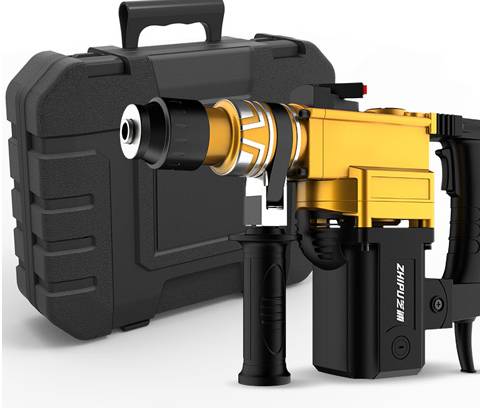loading...
- No. 9, Xingyuan South Street, Dongwaihuan Road, Zaoqiang County, Hengshui, Hebei, China
- admin@zjcomposites.com
- +86 15097380338
- Welcome to visit our website!
Innovative FRP Solar Walkways for Sustainable Urban Development and Energy Efficiency
Exploring the Future of Sustainable Urban Design FRP Solar Walkways
In an era where sustainability has become a pivotal concern for urban planners and architects, innovative solutions are being developed to marry functionality with environmentally friendly design. Among these developments, FRP (Fiber-Reinforced Polymer) solar walkways stand out as a revolutionary concept that not only enhances urban aesthetics but also promotes renewable energy utilization. This article delves into the intricacies of FRP solar walkways, exploring their advantages, applications, and potential implications for urban sustainability.
Understanding FRP Solar Walkways
FRP solar walkways are pedestrian pathways constructed from fiberglass-reinforced polymer, an advanced composite material that is lightweight, durable, and resistant to environmental degradation. These walkways are integrated with solar panels that capture sunlight and convert it into electricity. The dual functionality of these pathways – serving both transportation and energy generation – makes them an ideal solution for urban areas looking to improve their infrastructure while reducing their carbon footprint.
Advantages of FRP Solar Walkways
1. Sustainability The implementation of FRP solar walkways contributes significantly to urban sustainability. By harnessing solar energy, these walkways can power streetlights, signage, and other amenities, reducing dependence on fossil fuels. This shift not only lowers greenhouse gas emissions but also promotes a culture of energy conservation.
2. Durability and Low Maintenance One of the most compelling advantages of FRP materials is their resistance to corrosion and weathering. Unlike traditional materials like concrete and wood, which may require frequent repairs and maintenance, FRP walkways are designed to withstand harsh weather conditions and heavy foot traffic, thereby minimizing long-term maintenance costs.
3. Aesthetic Appeal The modular design of FRP solar walkways allows for a wide range of customizable options, catering to the unique aesthetic needs of urban settings. From vibrant colors to intricate patterns, these walkways can enhance the visual appeal of parks, plazas, and commercial districts, promoting a sense of community and engagement.
4. Mobility and Accessibility FRP solar walkways can be designed to accommodate various forms of transportation, including bicycles and scooters, making them vital for promoting multimodal transit systems in urban areas. Additionally, these walkways can be tailored to improve accessibility for individuals with disabilities, ensuring that urban spaces are inclusive for all residents.
frp solar walkway

Applications in Urban Environments
The potential applications of FRP solar walkways are vast. They can be integrated into public parks, plaza areas, and transportation hubs, serving as energy-generating surfaces that light up urban spaces. For instance, parks that incorporate these walkways can benefit from sustainable lighting solutions that reduce operational costs and reliance on grid electricity. In busy urban centers, where foot traffic is prevalent, FRP solar walkways can also be used to charge electronic devices, providing a practical service while generating clean energy.
Furthermore, with cities increasingly moving toward ‘smart’ technologies, FRP solar walkways can be equipped with sensors that collect data on foot traffic patterns, environmental conditions, and energy production. This data can inform future urban planning and resource allocation, leading to smarter, more responsive urban environments.
Challenges and Future Directions
Despite their numerous benefits, the widespread adoption of FRP solar walkways faces some challenges. Initial installation costs can be higher compared to traditional walkways. However, as technology advances and production becomes more streamlined, these costs are expected to decrease, making FRP solar walkways more accessible to municipalities worldwide.
Moreover, educating urban planners and the public about the long-term benefits of these innovative walkways is crucial for fostering acceptance and encouraging investment in sustainable infrastructure projects.
Conclusion
FRP solar walkways represent a promising frontier in the quest for sustainable urban development. By integrating energy generation into essential infrastructure, they offer a solution that is both environmentally friendly and practical. As cities around the world grapple with the challenges of climate change and urbanization, embracing technologies like FRP solar walkways will be essential in creating smarter, cleaner, and more resilient urban spaces. As we move forward, it is vital for stakeholders, including governments and communities, to collaborate and invest in such transformative solutions that can pave the way for a sustainable future.
-
The Rise of FRP Profiles: Strong, Lightweight, and Built to LastNewsJul.14,2025
-
SMC Panel Tanks: A Modern Water Storage Solution for All EnvironmentsNewsJul.14,2025
-
GRP Grating: A Modern Solution for Safe and Durable Access SystemsNewsJul.14,2025
-
Galvanized Steel Water Tanks: Durable, Reliable, and Ready for UseNewsJul.14,2025
-
FRP Mini Mesh Grating: The Safer, Smarter Flooring SolutionNewsJul.14,2025
-
Exploring FRP Vessels: Durable Solutions for Modern Fluid HandlingNewsJul.14,2025
-
GRP Structures: The Future of Lightweight, High-Performance EngineeringNewsJun.20,2025
